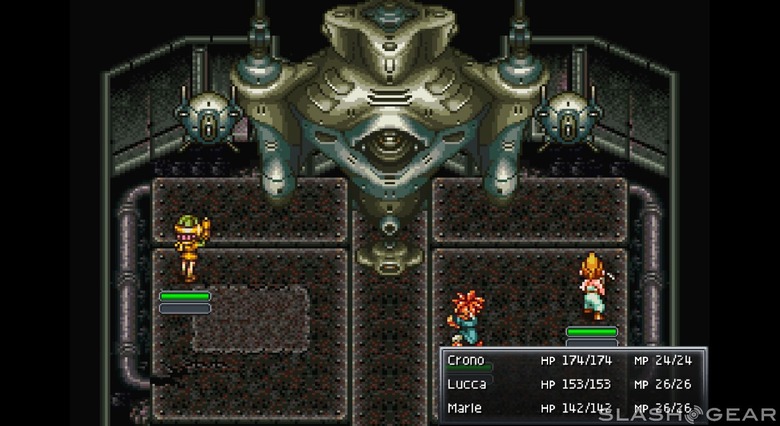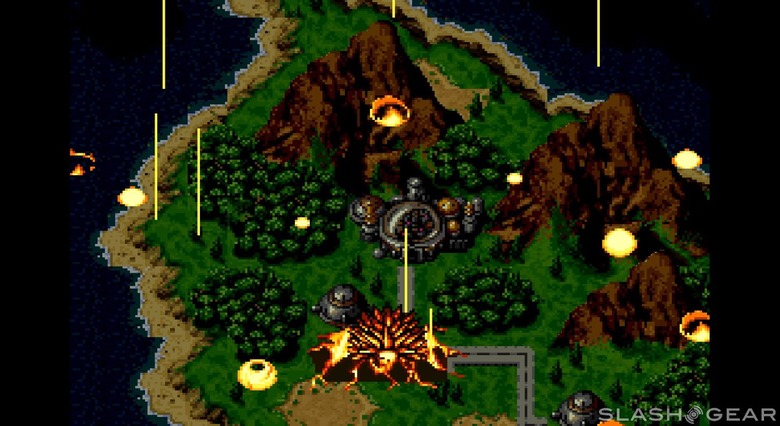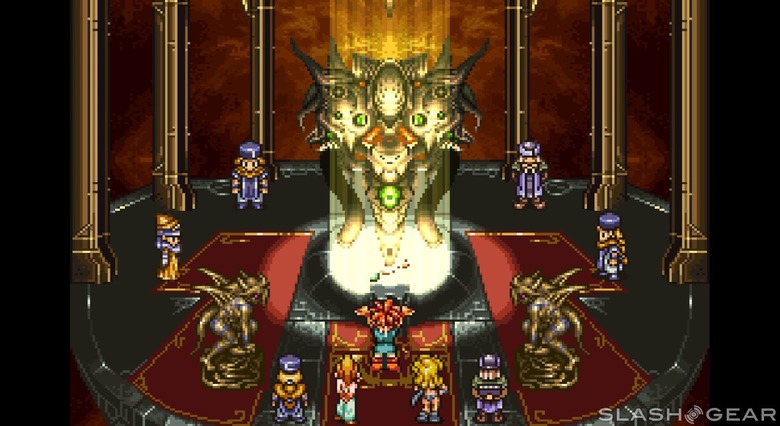Chrono Trigger At 25: A Story For The Ages
Story is, of course, the cornerstone of any role playing game, and that was as true 25 years ago as it is today. The less-capable hardware of the Super Nintendo didn't diminish the storytelling capabilities of Yuji Horii, Masato Kato, and their team of writers when it came to crafting Chrono Trigger's plot, and I would argue that they wound up penning one of the best stories gaming has ever seen.Note: There are heavy spoilers for Chrono Trigger ahead. This article series assumes readers have completed the game, so if you haven't yet, stop reading here.
Like many good enduring tales, Chrono Trigger's is relatively simple but also enthralling. It revolves around the main protagonist Crono, his friend Lucca, and a princess-in-disguise named Marle. Crono, Lucca, and Marle all live in the Kingdom of Guardia in the year 1000 AD. The Millenial Fair – a celebration that takes place every one thousand years – is happening as the game opens, and Lucca has gone to the fair to show off her newest invention: A teleporter.
Crono meets Marle (in disguise as a simple townsperson) before Lucca's demonstration, and when Marle volunteers as a test subject for the teleporter, a time gate opens and sends her back in time. Crono and Lucca decide to follow her, but when they rescue her and bring her back to the present day, Crono is arrested by the palace guard for kidnapping the princess and sentenced to death by the kingdom's corrupt chancellor.

Lucca and Marle break him out of his cell before his execution date and, on the run from the palace guard, they dive into another time gate they discover in the forest and are sent to the year 2300 AD. They quickly discover that the far-future version of their world has been ravaged by some apocalyptic event, with the few remaining people living out their lives in run-down shelters, often dying of malnutrition in a dark, depressing world that can barely sustain life.
Crono, Lucca, and Marle resolve to use their time traveling capabilities to prevent the apocalypse, which was caused by an intergalactic creature named Lavos. The adventure that follows takes them into the millions of years into the prehistoric past, into the age of antiquity, the middle ages, and even the end of time, which acts as something of an interdimensional terminal leading to all of the other time periods.
Lavos, they learn, is a parasitic creature that arrived on their planet in the prehistoric era – players actually get the chance to see the alien's arrival at one point in the game – and has been biding its time and growing its power deep underground. Its plan is to harvest the Earth's energy so it can send its spawn to other planets to do the same thing – essentially, Lavos and its spawn are travelling to planets, harvesting energy until they're sufficiently powerful, and then systematically wiping out life.

I'll stop there because I don't want this entire article to simply be a re-cap of Chrono Trigger's story, but it's hard not to get carried away when talking about it. There are so many little twists and turns that for first-time players, Chrono Trigger always seems to have a surprise waiting in the wings. The story is so good that it's still a delight to return to it even after you've played through it numerous times, if only because it's great to watch that plot unfold again.
Indeed, there are a lot of threads packed into this game, though they never really feel convoluted. That can be a rare thing in RPGs – Japanese RPGs in particular. Add to that the fact that this is also a time travelling tale and it seems miraculous that Chrono Trigger is as accessible as it is.
It feels like time travelling stories are often too concerned with the trivialities of time travel, whether that's explaining in detail the kind of technology it takes to actually travel through time or obsessing over the rules that must be followed if the people doing the time hopping want to avoid irrevocably changing the future. Chrono Trigger does indeed touch on the grandfather paradox at one point early in the game, but for the most part, it doesn't really concern itself with these specifics, which in turn makes its story more accessible for everyone.
The finished product is a tight, succinct narrative that tells a really good story and isn't weighed down by unnecessary details. There are twists and surprises, and there is a fair amount of misdirection, but it's all done so masterfully. As I said in my article yesterday, it never really feels like the game is wasting your time, but more like you're peeling back numerous layers to get to the bottom of a mystery.

Another great thing about Chrono Trigger's narrative is that no time period every really overstays its welcome, save for maybe the future (but maybe that's just because it's so bleak compared to the rest). You're in each time period just long enough to figure out a new piece of the puzzle and then it's onto the next. If anything, in fact, you don't spend enough time in the age of antiquity, which is my personal favorite time period among them all.
Famously, Chrono Trigger has a number of different endings – 13 in the Windows version, to be specific. The ending you see ultimately depends on when you fight Lavos, which can be done from a very early point in the game. Some of the endings are good, some are bad, and some are just straight up weird. I've played Chrono Trigger a number of times throughout the years and I haven't come close to seeing them all, which is probably why it's so easy to return to the game these days.
Of course, a story is only as good as its characters, and we'll be exploring Chrono Trigger's cast in the next article in this series. Be sure to check back tomorrow for the next entry in our week-long series about Chrono Trigger for the 25th anniversary of its US release.
